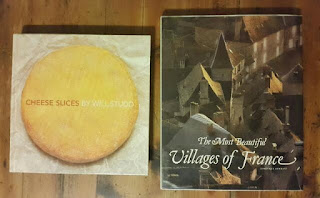Having decided on our basic route, and done a lot of background reading, we started thinking about what material to take with us to help with directions on our walk.
We have decided to take hard copies of the IGN (Institut National Géographique) 1:100000 scale maps of the areas we will be going to. These maps show the long-distance footpaths as well as topography and places of historical and geographical interest.
 |
| IGN 1:100 000 maps |
We will also be taking a few Topoguides (guidebooks with detailed maps, turn-by-turn directions and route highlights) for a few of the more popular sections of the trip.
 |
| The Topoguides we will be taking |
Although we are taking some printed material, we are not averse to using technology to help us find our way. I made extensive use of Google Maps and the IGN maps on the French Géoportail site when planning our route, and we intend to use offline Google maps, and saved screenshots of other useful sites, when we are on the road (or footpath, or canal towpath).
 |
| Screenshot of a Géoportail map, for use on the road |
Our smartphones will also have many other uses: we will be using them to record the distance we travel (with the Samsung S Health app), keep track of our accommodation (much of it booked through Booking.com and available to manage on the Booking.com app; also listed on a spreadsheet downloaded on both our phones), to browse the net and check our emails when we have WiFi access, to keep in touch with our family with Skype (which we successfully trialled late last week with our wonderful younger daughter in Canberra, who asked for a mention in our next post - ie now), to play the occasional game of Scrabble, and even to make and receive phone calls. And to write this blog.
 |
| Using the phone to write the blog |









